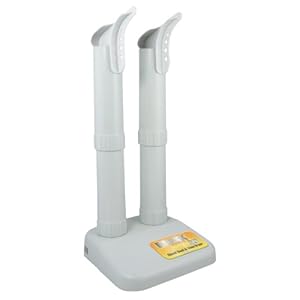The original title of this post was "Everything I love is dominated by elitist assholes", but I've toned it down a bit. I had been watching my favorite documentary, "El Sistema", about the music program in Venezuela that tries to be as inclusive as humanly possible -- I swear to god, they even have an orchestra for deaf children. The founder, Jose Antonio Abreu noted "The root cause of all our social problems is exclusion.” For some reason, that sentiment has stuck with me for the past year or so. As I examined many of my interests and hobbies, I realized that each one suffered greatly from a sense of exclusion.
Classical Music
When Jose Abreu began El Sistema in 1975, it could have been said by critics that exposing poor Venezuelan children to classical music was wrongheaded. Classical music is for old, white, rich people in the United States and Europe, right? But by expanding classical music into a population where it had not been accessible many strong musicians emerged, most notably Gustavo Dudamel who was appointed music director of the Los Angeles Philharmonic. This is the core reason diversity and inclusion are not mere lofty principles to strive towards when you have the time, but rather sources of strength. Cutting off major sections of the population to something great weakens the whole because the genius of so many goes unexpressed. Had Abreu not began El Sistema, Gustavo Dudamel (who is from a poor family) would likely not conduct Los Angeles today.
Sailing
Sometimes I get asked whether I grew up sailing, which always makes me laugh. If you knew my parents you'd understand. My story of getting into it is this: The first time I drove up Chuckanut Hwy near Bellingham, I looked out onto the San Juan Islands and said "I have got to get out there." I took a class at WWU, which was a fine introduction, but I needed a next step. I found an ad in the local paper from an engineless sailor who would take you sailing out of Squalicum Harbor for free provided that you learn a few terms and knots before you showed up. Be at the dock at 8am sharp. This was Jay Fitzgerald of Oar Club fame. He had a pretty tough time taking people out for free, especially since getting anyone in Bellingham to show up at 8am is pretty futile. I'm still glad he did it -- without him there is no way I'd be sailing the way I do today. One of my favorite things he's said: "People often ask me who I think the best sailor in the world is or was. I've always said: probably some kid in Mongolia. Genius is nothing without opportunity."
Today, I look at the marina in Ballard and ask what kind of message it sends to kids going to Golden Gardens in the summer from, say, Rainier Valley or Federal Way. It's hundreds of big ol' sailboats with locked gates at the top of the dock. Stay out. No trespassing. This area is for rich people. If you want to get into sailing, there is a fine school next to the Yacht Broker's office (ie, not gonna happen). And every time I think of this I get sad because it's actually quite easy to sail for free if you're in the club. Racing boats need crew. Stick around long enough, and some boat will take you on. I have several friends who constantly sail and never pay a dollar in moorage, new sails, or haul out costs. There's just no way a poor kid from a bad neighborhood is ever going to know it's possible. And honestly, if some 17-year-old Mexican boy hung around the marina he would likely get strange looks until he was discouraged to leave.
Areas for hope on this front are 1) Sandpoint Sailing, who aims to make sailing accessible for all. You can volunteer with them in exchange for sailing time. 2) Matt Rutherford, from Annapolis, MD. This badass set a record by sailing solo around the Americas while raising money for a sailing club for the disabled. More of this, please.
Cycling
The low cost of entry into cycling makes this perhaps the hobby of mine with the greatest potential for inclusion. However, this possibility is often adversely affected by Bicycle Culture. Cyclists have a distinct in-group mentality which intimidates and scares off many. (I'm looking at you, .83). When I first started dating my girlfriend (who had just moved from Chicago and hadn't ridden a bike since she was 12), I actually had bicycle friends of mine say to my face and in her presence "What the hell Bob, why are you dating her if she doesn't ride bikes?" This understandably turned her off to biking and it took a lot of time and work to undo the damage. Now, luckily, I have got her riding quite a bit.
This experience, among other things, led me to get involved with Seattle Greenways. Our group holds that for far too long, bicycle infrastructure in Seattle has been geared (no pun intended) towards young, strong, confident riders at the expense of others. We aim to build a network of walking and cycling routes for users of All Ages and Abilities. We don't think streets ought to be designed for "cyclists", but rather moms, grandparents, children, and whoever wants to get to school or work in a safe, healthy way.
Software
It's often claimed that software is a pure meritocracy. Like most myths, it's rooted at least partially in truth. If you're part of the in-group, it is indeed a meritocracy. This was recently debated on the internet. See Andrew Sullivan. I have mixed feelings about this. Many people in software are some of the most pleasant, chill folks that exist. Others are nice enough but they have no idea how much negative impact their condescending know-it-all attitude can have, especially in introductory Computer Science classes. I could say a lot more about this, but I'd probably get in trouble.
I was very pleased to see this addressed by my old coworker, Paul Watts. (Apparently the link on his page is busted... grr). He made a strong case that if you're not being actively inclusive, you are part of the problem. I could not agree more. Another source for hope is my buddy Perry Fizzano who is the Chair of the Computer Science department at WWU. He got a sizable grant to encourage more women to enter Math and Computer Science.
Conclusion
I've struggled a lot thinking how to make my activities and interests more inclusive. I've been handed a lot of opportunities in life - probably more than average. Should I just continue in my own self-interest by riding bikes and going sailing all the time? Or do I have a moral responsibility to pay it forward and help the next generation of kids get into this cool stuff? Stay tuned...





















